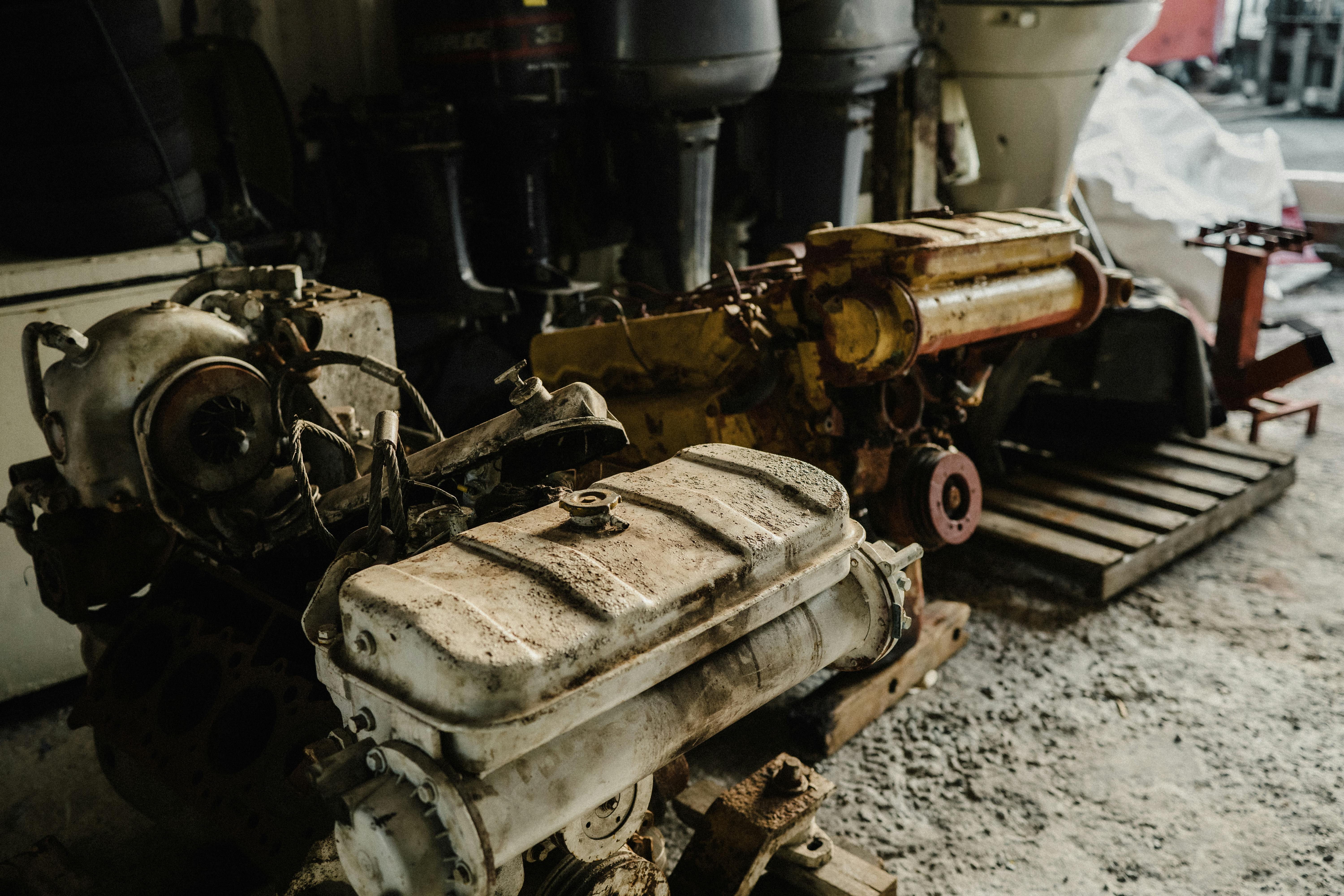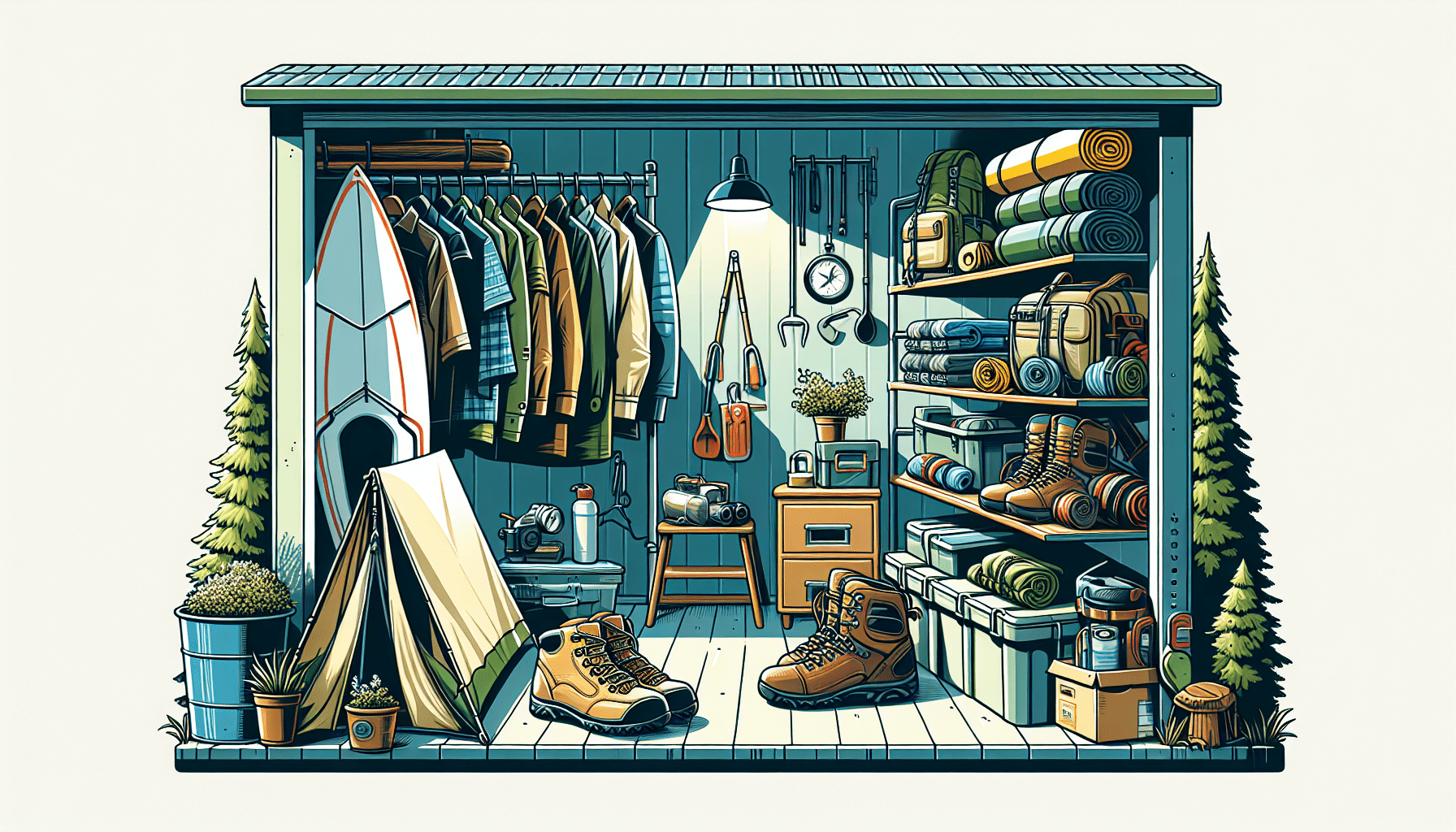You’ve invested in quality gear, whether it’s camping equipment, sports gear, or tools, and now you want to make sure it lasts as long as possible. That’s where gear storage comes in. Properly storing your gear is essential for prolonging its lifespan and ensuring it remains in top condition for future use. In this article, we’ll explore the importance of gear storage and provide you with some valuable tips to help you keep your gear safe and sound.
Choose the Right Storage Space
When it comes to storing your gear, finding the right space is crucial for ensuring its longevity. Consider the climate of the area where you will be storing your gear. Extreme temperatures and high humidity can cause damage to your gear over time. Therefore, it is best to choose a storage space that is climate-controlled to maintain stable temperature and humidity levels.
In addition to climate, it is essential to avoid storing your gear in direct sunlight. Prolonged exposure to sunlight can lead to fading, discoloration, and deterioration of certain materials. Instead, opt for a storage space that is shielded from direct sunlight to protect your gear from these harmful effects.
Adequate ventilation is another important factor in choosing the right storage space. Good air circulation helps prevent the buildup of moisture, which can lead to mold, mildew, and rust. Ensure that your storage space has proper ventilation to keep your gear dry and in good condition.
Lastly, protecting your gear from pests and insects is vital. Rodents, insects, and other pests can cause significant damage to your gear by chewing through materials, creating nests, or leaving behind droppings. Choose a storage space that has measures in place to prevent pests, such as secure and sealed containers or regular pest control treatments.
Clean and Maintain Gear Before Storage
Before you pack your gear away for storage, it is crucial to clean and maintain it properly. Remove any dirt, debris, or stains from your gear. Use a soft brush or cloth to gently remove any surface dirt, and pay attention to any hard-to-reach or delicate areas.
Wash and dry your gear appropriately according to the manufacturer’s instructions. Different gear may require different cleaning methods, so make sure to follow the recommended guidelines. After washing, ensure that your gear is completely dry before storing it to prevent mold and mildew from forming.
While cleaning your gear, take the opportunity to inspect it for any signs of damage or wear. Look for any tears, loose seams, or broken parts. Address any issues before storing your gear to prevent further damage during storage. If necessary, apply protective coatings or treatments recommended by the manufacturer to extend the lifespan of your gear.

This image is property of images.pexels.com.
Properly Organize and Arrange Gear
Proper organization and arrangement of your gear can make a significant difference in its longevity. Categorize similar gear together, such as camping gear, sports equipment, or electronics. This will make it easier to locate and access specific items when needed.
Use appropriate containers or bags to store your gear. For fragile or delicate items, opt for padded bags or cases to provide extra protection. Sturdy plastic bins or storage boxes with lids are ideal for heavier or bulkier gear and offer protection against dust, moisture, and pests.
Label each container or bag to make it easy to identify the contents. This will save you time and effort when searching for specific gear. Consider using clear bins or adding inventory lists to the outside of containers for quick reference.
Arrange your gear based on the frequency of use. Items that you use more frequently should be easily accessible, while those that are used less often can be stored away. This will help prevent unnecessary handling and potential damage to your gear.
Avoid Damaging Stresses
Avoid hanging heavy items on gear whenever possible. The added weight and pressure can cause damage or deformations over time. Instead, store heavy gear separately or lay it flat to distribute the weight more evenly.
Prevent sharp objects from causing damage to your gear by storing them separately or using protective covers. Knives, tools, or other sharp equipment can accidentally puncture or scratch your gear if not stored properly. Take precautions to keep these items away from your gear to avoid any unfortunate accidents.
If your gear contains delicate components, take extra care to protect them during storage. Wrap fragile parts in soft cloth or bubble wrap to cushion them from potential impacts or vibrations. This will help prevent any damage to the delicate components and extend the lifespan of your gear.
Avoid storing gear in overcrowded spaces. When items are packed too tightly, they can become damaged from the pressure or rubbing against each other. Allow enough space for each piece of gear to avoid any unnecessary wear and tear.

This image is property of images.pexels.com.
Maintain Suitable Temperature and Humidity Levels
Maintaining the proper temperature and humidity levels in your storage space is crucial for protecting your gear. Fluctuating temperatures can cause materials to expand and contract, leading to warping, cracking, or structural damage. Choose a storage space with a stable temperature to minimize the risk of these issues.
Humidity control is equally important for preventing mold, mildew, and rust. High humidity can promote the growth of mold and mildew, while low humidity can cause materials to dry out and become brittle. Consider using dehumidifiers or moisture absorbers to maintain an optimal humidity level for your gear.
If you live in an area with extreme temperature or humidity fluctuations, take extra precautions to protect your gear. Use insulated containers or cases to provide a buffer against these conditions. By maintaining suitable temperature and humidity levels, you can significantly prolong the lifespan of your gear.
Regularly Inspect and Rotate Stored Gear
Regular inspections of your stored gear are essential for identifying any signs of damage or deterioration. Check for any tears, stains, or other damage that may have occurred during storage. The earlier you catch these issues, the easier they are to fix and the less likely they are to worsen over time.
Inspect for pest infestations during your regular checks. Look for any signs of rodents, insects, or other pests that may have made their way into your storage space. If you notice any indications of pest activity, take immediate action to prevent further damage to your gear.
Rotate your stored gear periodically to prevent prolonged pressure on specific items. This is especially important for gear that is susceptible to warping or damage from continuous weight. By rotating and redistributing the pressure, you can ensure that no single item bears an excessive burden.
If you come across any damaged gear during your inspections, decide whether to replace or repair it. Some items may be beyond repair or may not be cost-effective to fix. In these cases, it is best to replace the gear to maintain optimal functionality and safety.

This image is property of images.pexels.com.
Implement Preventative Measures
Implementing preventative measures can go a long way in protecting your gear during storage. Use appropriate gear covers or cases to shield your items from dust, dirt, and potential hazards. This is particularly important for outdoor gear that is exposed to the elements.
Apply rust inhibitors or anti-corrosion products to metal components or surfaces prone to rust. This extra layer of protection can significantly extend the lifespan of your gear and prevent costly repairs or replacements.
Invest in moisture-resistant storage solutions to safeguard your gear against moisture damage. Look for containers or bags made from waterproof or water-resistant materials to keep your gear dry and mold-free.
Implementing pest control measures is also crucial to prevent infestations. Consider using pest deterrents, such as mothballs or deterrent sprays, to keep pests away from your stored gear. Regularly inspecting and cleaning your storage space can also help prevent pests from taking up residence.
Consider Climate-Controlled Storage Options
If you have valuable or sensitive gear, it may be worth considering climate-controlled storage options. Climate-controlled storage units offer the advantage of maintaining a consistent and optimal environment for your gear. These units are equipped with heating, ventilation, and air conditioning systems to regulate temperature and humidity levels.
Another option is to explore renting or building your own climate-controlled storage space. This gives you more control over the conditions in which your gear is stored. However, it may require a larger investment of time and resources.
To ensure that your gear is stored in the most optimal conditions, you may want to consider using temperature and humidity monitoring systems. These systems can provide real-time alerts or readings, allowing you to take immediate action if there are any significant deviations from the desired levels.
When considering climate-controlled storage options, it is essential to evaluate the cost and feasibility for your specific gear storage needs. Factor in the value of your gear, the length of storage, and any specialized requirements to make an informed decision.

Follow Manufacturer Guidelines
To ensure the best possible care for your gear, follow the manufacturer’s guidelines for storage. Read and understand the product manuals provided by the manufacturer. These manuals often contain valuable information on how to clean, maintain, and store your gear properly.
Follow the recommended storage instructions provided by the manufacturer. These instructions may include specific temperature or humidity ranges, instructions for disassembling or folding gear, or other important details. Adhering to these guidelines will help prolong the lifespan of your gear.
In addition to storage instructions, manufacturers often provide recommendations for maintenance and cleaning. Follow these guidelines to keep your gear in optimal condition. Regular maintenance and cleaning can help prevent issues before they become more severe.
If you have any specific queries or concerns about storing your gear, reach out to the manufacturer directly. They are the experts on their products and can provide you with the most accurate and tailored advice for your gear.
Regularly Review and Update Storage Practices
Gear storage practices evolve over time, so it is important to stay updated on the latest best practices. Keep yourself informed by reading articles, blogs, or forums related to gear storage. By staying informed, you can adapt your storage methods based on new insights and recommendations.
As your needs change or your gear collection grows, it is crucial to continuously review and update your storage practices. Reassess the organization, arrangement, and space allocation of your gear accordingly. By regularly reviewing and updating your storage practices, you can enhance the efficiency and effectiveness of your gear storage system.
If you encounter challenges or have unique storage requirements, it may be beneficial to seek professional advice. Experts in gear storage can provide personalized recommendations based on your specific situation. Their expertise can help you optimize your gear storage system to maximize longevity and ease of access.
In conclusion, proper gear storage is essential for prolonging the lifespan of your gear. By choosing the right storage space, cleaning and maintaining your gear before storage, properly organizing and arranging your gear, avoiding damaging stresses, maintaining suitable temperature and humidity levels, regularly inspecting and rotating stored gear, implementing preventative measures, considering climate-controlled storage options, following manufacturer guidelines, and regularly reviewing and updating storage practices, you can ensure that your gear remains in excellent condition for years to come. So, take the time to care for your gear properly, and it will reward you with reliable performance and longevity.


